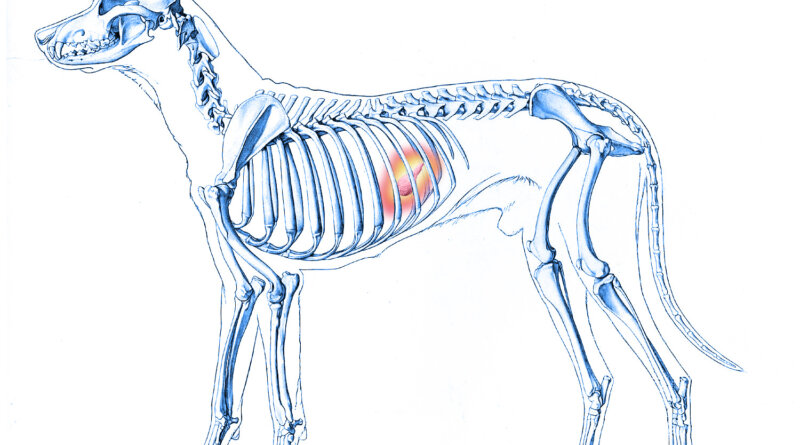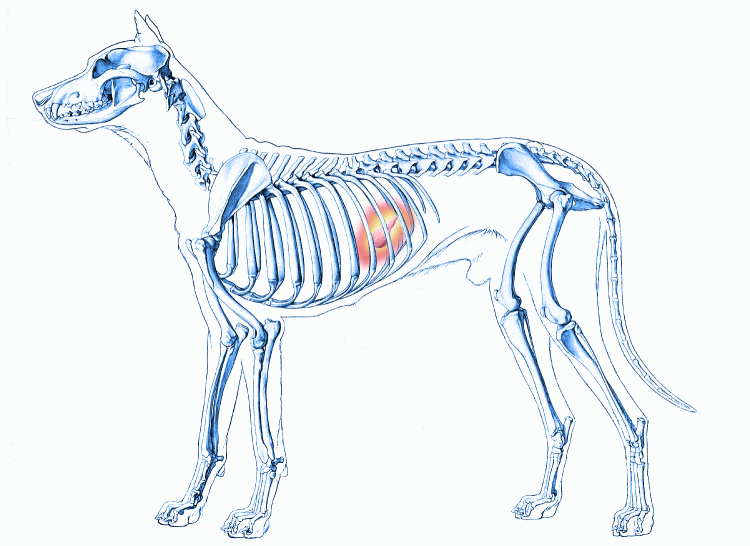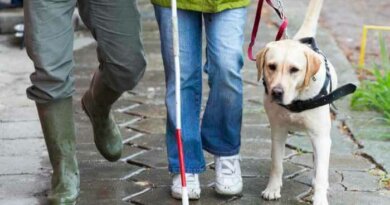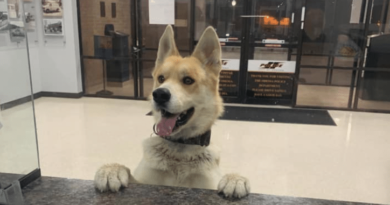Treating Pancreatitis in Dogs | The Bark
Throughout the year, I see many dogs in the ER because of stomach problems. Birthday parties, summer barbeques and winter holiday dinners are prime times for dogs to not only score more food than usual, but often, food that doesn’t agree with them. This indulgence can set them up for the development of pancreatitis, a potentially life-threatening disease.
What Is Pancreatitis?
Let’s start with the pancreas. The pancreas sits just under the stomach and along the first part of the small intestine. The pancreas has two main jobs. The first is the secretion of digestive enzymes to help break down food in the small intestine, and the second is the secretion of insulin and glucagon to regulate the body’s blood glucose (sugar) levels. When a dog develops pancreatitis, the digestive enzymes are the problem.
Put simply, pancreatitis is an inflammation of the pancreas that can be either acute (comes on quickly) or chronic (develops over time). The inflammation is caused when the digestive enzymes are activated within the pancreas itself, before they get to the GI tract, and begin to digest, irritate and harm this small organ as well as nearby organs and tissues.
As inflammation and tissue destruction continues, damage begins to spread to the liver. If not treated quickly, toxins released during this process circulate more broadly, causing a body-wide inflammatory response. If the dog’s pancreas becomes severely compromised, its ability to produce insulin may be affected and diabetes may result.
GET THE BARK IN YOUR INBOX!
Sign up for our newsletter and stay in the know.
The good news is that commonly, the inflammation is confined to the area of the liver and pancreas, and with veterinary support, most dogs make a full recovery from acute pancreatitis.
Signs of Pancreatitis in Dogs
The classical signs of pancreatitis are loss of appetite, nausea, vomiting, diarrhea, fever, abdominal pain and severe depression. During a sudden, acute pancreatitis attack, in addition to the these symptoms, the dog may hunch her back or take a “praying” position (rear in the air and head on the floor, similar to a play bow). For dogs with chronic pancreatitis, symptoms may develop slowly over time, making it more difficult to diagnose. Other possible symptoms of acute pancreatitis include difficulty breathing and shock; left untreated, the dog may die. To be clear, pancreatitis is a serious illness and requires immediate veterinary care to prevent life-threatening consequences. DIY treatments are not recommended.
What Causes Pancreatitis?
In most cases, the cause of pancreatitis in dogs is unknown, but we do know some of the things that may trigger it.
- High-fat foods: A high-fat diet, or eating a large serving of fatty foods, especially human foods. (Think uncooked bacon, poultry skin, gravy or a fatty piece of meat.)
- Dietary indiscretions: Indiscriminate eating habits.
- Pancreatic duct backflow or obstruction: Reflux or blockage of the organ’s enzyme ducts.
- Hormonal imbalances: Most commonly, diabetes, hypothyroidism and high calcium levels.
- Toxins: Certain drugs, including those used in chemotherapy treatment and the anti-seizure medication potassium bromide. (Steroids were once thought to trigger the condition, but this appears not to be true. Exposure to organophosphate insecticides has also been implicated.)
- Trauma to the pancreas: Blunt trauma, such being hit by a car, or even surgical manipulation.
- Genetic predisposition: In particular, Miniature Schnauzers (who often have an altered fat metabolism), Miniature Poodles, Cocker Spaniels and some Terrier breeds. (Older and overweight dogs may be more predisposed as well.)
Diagnosing Pancreatitis in Dogs
One way veterinarians diagnose dogs with pancreatitis is through the use of a blood test called the SPEC cPL (specific canine pancreatic lipase) test. The SPEC cPL test, which is run overnight by a reference lab, detects 83 percent of pancreatitis cases in dogs and excludes other possible diseases in 98 percent of cases.
The SPEC cPL test should not be confused with an in-hospital pancreatic test, which provides either an “abnormal” or “normal” result. I am personally not a huge fan of the in-house test because other disease processes, such as liver or gastrointestinal disease, can also cause an abnormal result.
Ultrasound is another tool that veterinarians use to diagnose pancreatitis. It not only detects 68 percent of cases, it also provides an opportunity to look at other organs. Since pancreatitis may be accompanied by a tumor near the pancreas, ultrasound is an important tool for catching additional complicating factors. I discuss and recommend this diagnostic tool for all patients I suspect of having pancreatitis.
How Is Pancreatitis Treated?
The first step in treatment is to give the pancreas a rest. Because the passage of food through the intestine stimulates the pancreas, we generally withhold food and water for two to three days (especially in serious cases), supporting the dog with IV fluids, including electrolyte supplementation. A critically ill dog will need 24-hour care as well as multiple daily blood draws to monitor the condition. In severe cases, a plasma transfusion may be of great help.
Pancreatitis can be a very painful condition for dogs, and pain management is crucial for the dog’s recovery and treatment. Untreated pain affects the immune system and has been shown to increase the death rate. In addition to pain medication, antibiotics and anti-nausea medications are also given. While pancreatitis is not a bacterial disease, antibiotics are used to prevent a commonly associated problem, bacterial invasion from a diseased intestine.
Recovery and Ongoing Treatment
Recovery from pancreatitis begins after about two to three days, once the initial resting phase has passed and the patient has started to eat again. A low-fat diet is recommended to minimize pancreatic stimulation. Pancreatitis resolves rather than is cured; with treatment, the body heals itself. Since there’s always potential for the pancreas to become inflamed again, we also recommend long-term use of a low-fat diet to reduce the risk of recurrence.
How to Avoid Triggering Pancreatitis
Pancreatitis can be a very severe and painful disease. To avoid triggering it in your dog, observe these three simple precautions:





